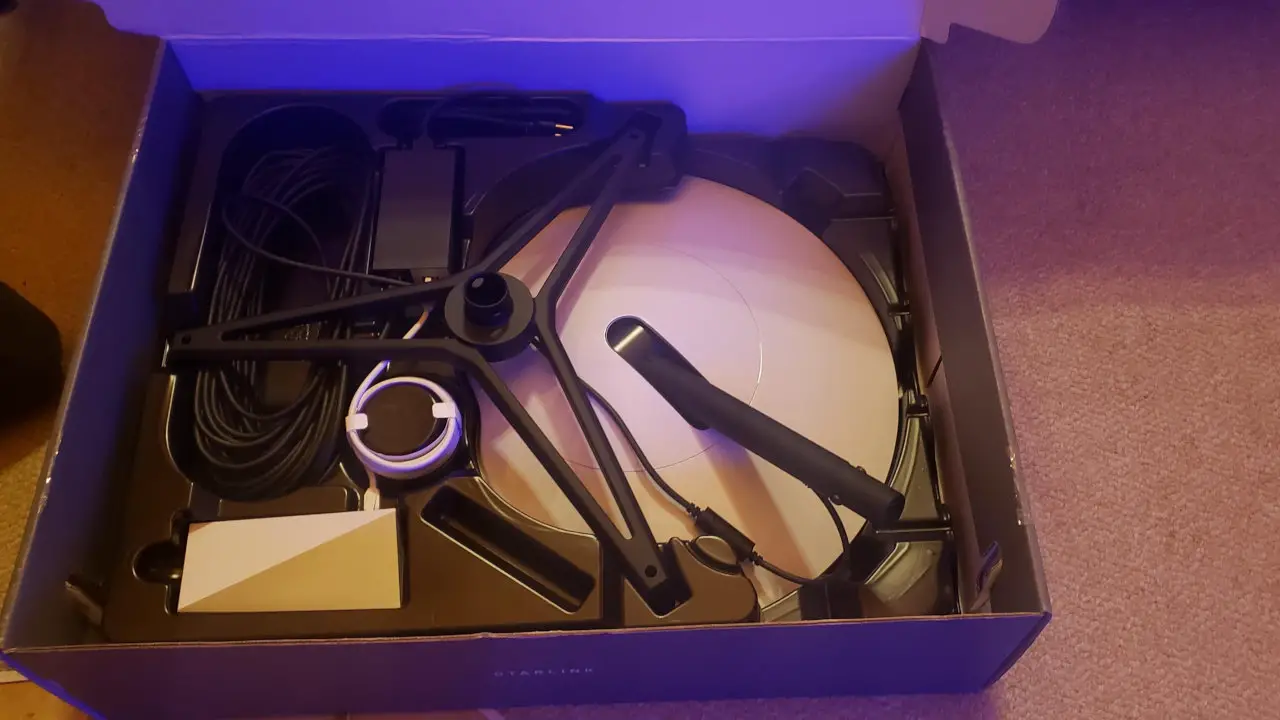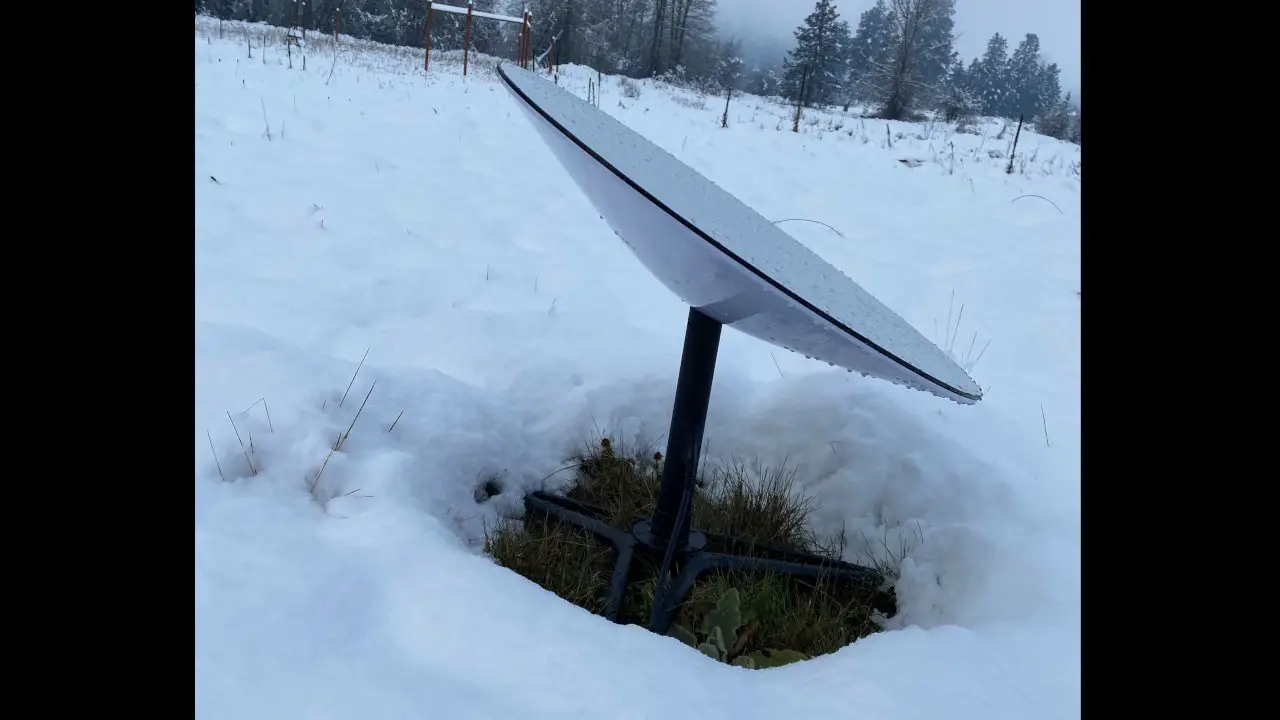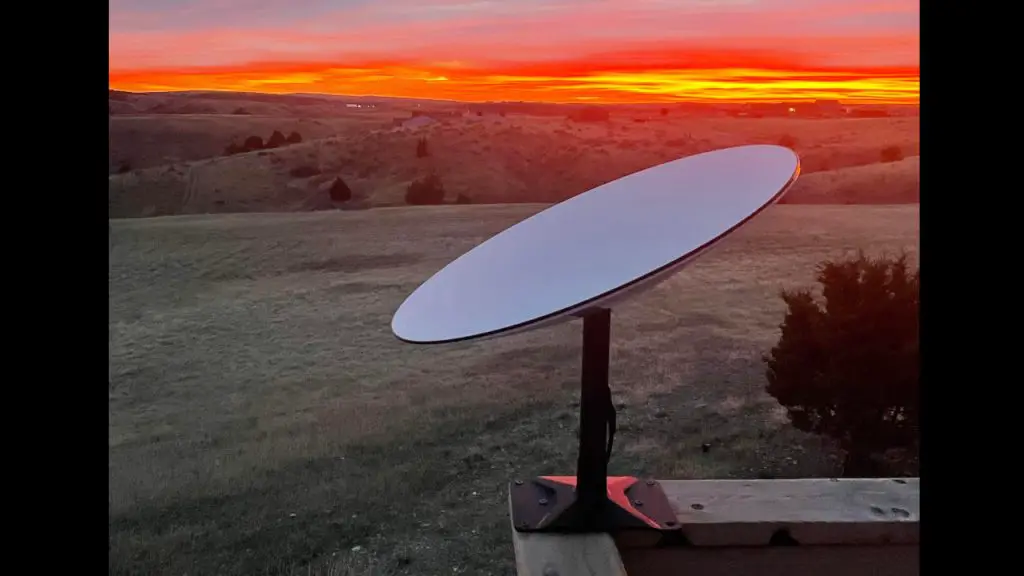If you live in an area where there’s no cable or cellular internet, then satellite internet is your only option. There are three major satellite internet providers. HughesNet, Viasat, and Starlink.
Viasat and HughesNet have been in the market for a long time. However, Starlink started its service in 2020, and currently, they provide service in more than 20 countries.
This article is the comparison between Starlink and HughesNet internet.
Starlink vs. Hugheness Comparison Table:
| Comparison Category | Starlink | HughesNet |
|---|---|---|
| Upfront Cost | $599 | $449 |
| Monthly Data Limitation | None. | Yes. 10GB/20GB/30GB/50GB. |
| Monthly Price | $109 | 10GB at $59.99, 20GB at $69.99, 30GB at $99.99, and 50GB at $149.99 |
| Contract Period | None. | 24 Months. |
| Early Cancellation Fee | $0 | Up to $400. |
| Latency | Typically 20ms to 50ms. | Minimum 600ms, Up to 1200ms. |
| Download Speed | 50Mbps to 150Mbps. Typically more than 100Mbps. | Maximum 25Mbps. Realworld result is terrible. |
| Upload Speed. | 20Mbps to 50Mbps. | Maximum 3Mbps. |
| Installation | Easy. Takes less than 5 minutes. | Professional installation is required. Takes up to 5 business days to get an appointment. |
| Installation Fee. | $0 | Required if you lease equipment. |
| Online Gaming | Yes. | No. |
| VPN | Yes. | No. |
| Operator | SpaceX | EchoStar |
Does the Starlink work in adverse weather? Is the Starlink router waterproof, and will it work outside? This article talks about 13 essential questions that are important for Starlink ownership.
Initial Price:
HughesNet has two ordering options for their satellite internet. You can either lease or purchase the equipment. The equipment includes the modem, power supply, and satellite antenna. If you decide to purchase HughesNet, they will charge you a $449 one time fee. This price also includes professional installation costs. For the lease option, there is a one time $99 setup fee and a $14.99 monthly equipment fee on top of your monthly internet bill.
SpaceX does not allow to lease its equipment. You have to purchase it. SpaceX charges a one time $599 for their Starlink equipment. It includes a phased array antenna dish, a power supply unit, a router with built-in WiFi, antenna mounts, and two ethernet cables.

Starlink is a substantial investment. Sometimes, you no longer need the Starlink equipment for personal reasons and want to recoup some of the money. This article discusses 5 things about Starlink sales, transfer, service cancellation, and related problems when you move to another address.
Equipment Setup Process:
HughesNet uses two geostationary satellites to provide the internet. Therefore, its satellite dish must point towards those satellites for optimal internet speed. You need a professional technician to install a HughesNet dish. You also have to pay an installation fee if you are leasing HughesNet’s equipment. Depending on your location, it may take up to 5 business days to install this equipment.
Starlink does not require any professional installation. SpaceX designed their equipment in such a way that anyone can install it. You only need to point the Starlink phased array antenna towards an open sky, power up the power supply unit. You can put your satellite dish anywhere you like as long as it has a clear view of the sky. The dish will orient itself to get an optimum satellite view with the built-in motors.
Then, connect the black ethernet cable from the power supply unit to the antenna and the white ethernet cable to the Starlink router. That’s it. You don’t need a professional installer.
Monthly Cost:
HughesNet has four internet packages. All these packages come with data cap limitations. These packages are 10GB internet at $59.99/month, 20GB internet at $69.99/month, 30GB internet at $99.99/month, and 50GB internet at $149.99/month. For Netflix, Youtube, Hulu, Disney+, or on-demand video services, HughesNet is a terrible choice.
On the other hand, Starlink has one internet package priced at $109/month for unlimited data.
Download Speed:
Though HughesNet advertises 25Mbps download speed and 3Mbps upload speed, we hardly ever see that speed in reality. Download speed never exceeds 8-10Mbps in our area. We have met HughesNet customers who said their internet speed never even crosses 3-4 Mbps. It’s because HughesNet only has two geostationary satellites that provide the internet in the whole world. Furthermore, they have oversold their internet bandwidth.
On the contrary, when SpaceX invited us to get Starlink, they promised a download speed of 50 Mbps to 150 Mbps. However, Starlink’s internet speed exceeds 100 Mbps consistently. We also have seen similar experiences from other Starlink users. Moreover, SpaceX is adding newer Starlink satellites each month. Hence, routinely we experience internet speed upgrades.
Many RVers are surprised that they are getting very slow internet access over Starlink. Starlink is not always the best internet for RVers. This article discusses the important reasons you should remember before ordering your Starlink for RVs.
Upload Speed:
Upload speed is very crucial. For example, without a high upload speed, a YouTuber can’t upload videos.
HughesNet offers an upload speed of 3Mbps. However, we never got a 1Mbps upload speed. It’s entirely useless for uploading large files to google drive or YouTube.
On the other hand, Starlink consistently achieves 30Mbps to 40Mbps upload speed.
Latency:
Whenever we request something from a webpage, our request goes to the webpage server, and the response comes back to us. Due to the physical distance between us and the server, there’s a delay. It’s called latency.
HughesNet uses geosynchronous satellites to provide the internet. These satellites are 35,786km (22,236 miles) above the earth. As a result, HughesNet has a minimum of 600ms latency. Sometimes it goes up to 1200ms.
On the other hand, Starlink uses low earth orbit satellites. These satellites are placed in 550km (340 miles) orbit above the earth.
Starlink regularly achieves a latency of less than 50ms. Reports show that the latency between 20ms to 40ms is typical, which is mindblowing for satellite internet.
Cancellation Policy:
A HughesNet customer has to sign a 24-month contract to get their internet service. It has up to a $400 early cancellation fee. Furthermore, if you leased HughesNet internet equipment, you have 45 days to return those to Hughes. Otherwise, they will charge you $300. Moreover, you incur all the equipment de-installation and shipping costs. If your satellite receiver is on top of your roof, it means you have to spend another $100 to $150 to de-install your equipment.
SpaceX does not ask any customer to sign a contract to get Starlink internet. You can cancel your Starlink internet anytime you like without a cancellation fee. Moreover, when you are ready, you can restart your service again. It is huge.
HughesNet binds you for 24 months, whereas Starlink gives you complete freedom.
Many HOA will ask you to paint the Starlink Dish. In some areas, you must bury the cable to protect it from animal bites or lawn mowers. This article discusses 6 important things about the Starlink dish, router, and cable.
Data Caps:
HughesNet does not have a real unlimited internet package. HughesNet has 4 data packages — 10GB, 20GB, 30GB, and 50GB. After you consume all your data, HughesNet will throttle your download speed at 1-3 Mbps. In a real-world scenario, this speed is unusable. Moreover, HughesNet doesn’t even provide this download speed.
On the contrary, Starlink does not have any data caps on its internet. You can stream Netflix or Hulu, download gigabytes of games without the fear of data throttling.
Inclement weather interference:
On a cloudy day, HughesNet’s internet service deteriorates a lot. On a rainy or snowy day, their service drops altogether.
However, Starlink uses a phased array antenna, and its satellite uses Ku and Ka band. Therefore, the weather has less effect on its satellite transceiver compared to HughesNet’s dish. Tests have shown that even on a massive snowy and rainy day, Starlink does not lose internet connectivity.

Gaming:
There’s no way you can game on HughesNet. Though HughesNet claims that users can play Xbox Live games on their network, it’s not entirely true. The 600ms to 1200ms latency prevents online gaming on their network.
Starlink regularly achieves latency below 50ms. We often got 20ms latency. As we know, a latency of less than 100ms is enough for online gaming. That’s why anyone can play online games on the Starlink internet without any issue. According to SpaceX, they are targeting to lower the latency below 20ms. So, their service will improve as days go by.
Can Governments ban, block, censor, or jam your Starlink internet access? How will China and Russia tackle Starlink? To learn more read this article.
VPN:
We can’t use a VPN service with HughesNet internet.
Starlink has no restriction on the VPN. The internet works perfectly over a VPN.
Why is Starlink’s internet cheaper and better than HughesNet?
Starlink is a SpaceX company. SpaceX designs, builds, and launches its satellite for the Starlink constellation. Moreover, SpaceX is reusing their rockets first stage and nose cones. Besides, Starlink satellites are in low earth orbit.
On the other hand, HughesNet neither develops nor launches its satellites. They entirely depend on others. They are only satellite operators. Moreover, HughesNet puts their satellites in Geosynchronous orbit.
It’s why Starlink internet is cheaper and better than HughesNet internet.
Starlink is the best satellite internet service compared to HughesNet, Dish, and Viasat. However, there are 8 reasons you shouldn’t buy Starlink to save money and avoid frustrations. This article discusses these reasons in depth.
Conclusion:
SpaceX is rapidly increasing its service coverage. In your area, if Starlink is available, by all means, purchase it. Otherwise, please wait. HughesNet internet service is terrible. We don’t recommend HughesNet.
